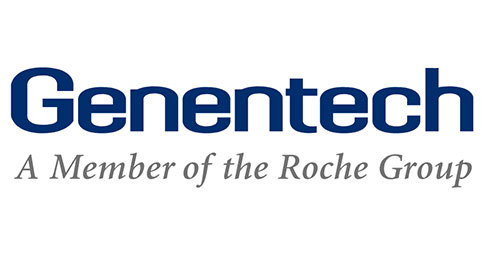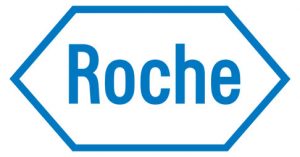Metabolomics is the study of processes involving metabolites and small molecules within biological systems, generally using high-throughput profiling approaches. Fios Genomics offers robust analysis and biological interpretation of metabolomic and lipidomic profiles to reveal alterations in cellular biochemistry and identify clinical or disease-related metabolomic biomarkers.
What We Offer
Fios Genomics offers established, cost-efficient and rapid turnaround analysis services for metabolomic and lipidomic data sets from a range of targeted and non-targeted acquisition methods, including tandem gas chromatography–mass spectrometry (GC-MS), liquid chromatography-mass spectrometry (LC-MS) and nuclear magnetic resonance (NMR). We can analyse all types of samples, from bacteria to animal cells, tissues and biofluids such as plasma, serum, urine and saliva. We can receive data in various formats for analysis such as compound abundance tables or spectral data.
Our metabolomics data analysis solutions include:
Quality control evaluation of metabolomic and lipidomic data sets
We perform rigorous quality control and exploratory data analysis procedures in order to identify and correct any technical issues that may affect downstream analysis and interpretation of results. This includes common pitfalls in metabolomic studies, such as batch effects, random and non-random missingness below the limit of detection values, and sample outliers.
Processing of raw abundance data
Our processing pipelines follow the most up-to-date best practices to process raw abundance values, including normalisation across samples and batches, assessment and imputation of missing values, as well as correction of batch effects. Our pipelines are compatible with a multitude of data providers and acquisition methods, and we can design novel, custom pipelines for ad-hoc analyses.
Annotation of identified compounds with public databases and comparison across sample types
Annotation information provided during data generation can often be incomplete and inconsistent, which can hinder biological inference, and comparison across sample types. We retrieve and curate information from public reference databases such as PubChem and LipidMaps to augment existing annotations of identified compounds, assign functional pathways to individual features, and harmonise annotations across sample types.
Statistical analysis of metabolome and lipidome changes
We design and apply robust statistical analysis pipelines in order to analyse changes in metabolome and lipidome composition and identify differentially abundant compounds between sample groups. We can accommodate complex experimental designs, such as time-course analyses.
Functional enrichment analysis to identify alterations at pathway level
Our analysis capabilities are not limited to identifying individual significant compounds. We use metabolic pathway resources such as MetaCyc to group key compounds into pathway groups and evaluate high-level functional changes using analytical methods such as gene set enrichment analysis (GSEA). Also, our results are supplemented with in-depth biological interpretation of global patterns and processes.
Congruence analyses across sample types and experiments
In metabolomic studies, data is often generated separately for different tissues or fluids. Comparing patterns observed across sample types is key in order to fully understand the biological implications of metabolomic changes in the whole organism. We perform congruence analyses to find common trends across sample types, and even between different studies and experiments in order to identify overlaps in key compounds and pathways.
Benefits of Working with Fios Genomics
Metabolomics data, and in particular mass spectrometry data sets, can be challenging to analyse. Challenges include technical factors, such as missing or below limit-of-detection values or confounding with biological and technical variables that might impact the metabolome independently of the experimental factor of interest. Additionally, incomplete annotation of identified biomarkers can hinder understanding of biological processes. However, our analysis pipelines are designed with the most up-to-date analytical methods and incorporate information from reference compound databases to circumvent these limitations and make the most of metabolomics data sets.
When you work with us you will benefit from:
Dedicated Bioinformatician
A dedicated bioinformatician, backed by an experienced bioinformatics team, will curate all data, identify the most appropriate statistical approach to take and provide a biological interpretation of results
Interactive Data Analysis Report
Receive a searchable data analysis report that includes interactive visualisations of the data. Our reports are internally peer-reviewed and include analysis methods and results (particularly helpful if you plan to publish your research results)
Post-Report Follow-Up
Upon receipt of our data analysis report, we arrange a review call so that your project’s dedicated bioinformatician can talk you through the results and answer any questions you have about the report
Dedicated Project Manager
Your dedicated Project Manager will act as your single point of contact throughout the project. They will ensure everything from data transfer to report delivery runs smoothly and efficiently for you
Large Capacity Computing
When you choose Fios Genomics, you benefit from our large capacity computing and secure data storage facilities, where we store all your raw data, analysed data and your data analysis report
Relevant Applications
Understanding changes in metabolites and metabolic pathways over time
Metabolic profiling gives a snapshot of ongoing chemical processes within the cell which directly reflects the underlying biochemical activity and state of cells. This can include the evaluation of temporal changes for both endogenous metabolites (produced by the host organism) as well as exogenous sources, reflecting changes in cellular biochemistry over the time course of a study or experiment.
Profiling of metabolites in biofluids between normal and diseased subjects
Metabolomics has the potential to link genetic, environmental, and other physiological elements to specific disease states, allowing the identification of relevant biomarkers in tissues or biofluids that are associated with the disease.
Identification of metabolites and derivatives associated with drug exposure and toxicity
Pharmacometabolomics is an increasingly important component of drug response evaluation. Analysing metabolomic changes associated with drug administration provides important information on drug effects on specific compounds, allows the identification of biochemical pathways which may affect drug response phenotypes, in addition to facilitating the evaluation of drug-induced toxicity.
Gaining an integrated insight into drug and disease effects in the whole organism
Many studies involving metabolomic data are from minimally invasive sources (e.g. biofluids) but can also be extracted from many other tissues. The chemical properties of metabolites can be widely different, from hydrophobic macromolecules such as lipids (lipidomics) to smaller water-soluble metabolites such as sugars. Due to these differences, it is not generally possible to capture all compounds by a single analytical method, and several approaches are commonly used in combination. Integrating different metabolomic and lipidomic data sets and identifying common alterations across different sources is key in order to reach additional insights into drug and disease effects in the whole organism.
Our Experience in Metabolomics Data Analysis
Below is a small selection of metabolomics data analysis projects where we have successfully helped our clients:
- Evaluating sensitivity of exposure to hydrogen sulphide and effect of parasitic infection in Atlantic salmon
- Integration of metabolomic data with proteomic and transcriptomic data in Aspen
- Profiling canine blood and muscle metabolome and lipidome to investigate links between heart disease and diet
- Metabolomic and short-chain fatty acid analysis of a murine Parkinson’s disease model
- Application of supervised machine learning approaches to generate a metabolomic signature of brain injury in mice
- Evaluation of metabolic changes associated with CRISPR gene dependency scores in cancer cell lines
Our Reports
Our analysis reports come as an HTML link hosted on our secure server. The secure link contains a password-protected HTML document that is clickable, searchable, and dynamic. This format allows you to easily interrogate and explore your data. Our reports always include all analysis methods, tools and thresholds.

Example Metabolomics Data Analysis Report
To demonstrate what you can expect from a Fios Genomics metabolomics data analysis report, we have an example report available. This report includes the analysis of a publicly available metabolomic data set (ST000010) obtained from the Metabolomics Workbench website. The data set was generated to investigate epithelial-mesenchymal transition (EMT) in lung cancer and contains metabolite counts from lung cancer cells exposed to different combinations of experimental treatments. To view this report contact us and ask for our Metabolomics report.
Our Testimonials
We have utilized the Bioinformatics team at FIOS Genomics for many of our drug discovery projects, as they provide expertise in the analysis of complex bioinformatic datasets. This includes large scale datasets from public sources as well as internally generated datasets. In many instances, at the start of a project, we have planned our large scale transcriptomic/proteomic studies with the FIOS team, to ensure that the data generated would provide the information we need, and that our projects had the highest chance of success. We have been consistently impressed with the rigor of FIOS’ work, their communication throughout the projects, and the rapid speed at which they complete their analyses.

Companies We Have Worked With
Request a Quote
Further Information
Our standard metabolomics and lipidomics data analysis pipeline includes:
- Interrogation of reference metabolomics and lipidomics databases in order to augment the annotation information for compounds identified during data generation
- Quality control evaluation of abundance data, including assessment and imputation of missing and below limit-of-detection values where appropriate
- Normalisation across samples using appropriate data normalisation techniques
- Identification and correction of batch-related effects
- Exploratory analysis and evaluation of abundance data using unsupervised clustering and dimension reduction techniques to assess overall sample quality, investigate data stratification, and identify possible outliers
- Differential compound abundance analysis
- Functional enrichment analysis using metabolic pathway resources such as MetaCyc
Where required we can include a range of further bolt-on analyses, for example gene set enrichment analysis (GSEA) to assess functional enrichment, congruence across multiple sample types (such as different tissues in an organism), or integration with other high throughput data sets such as transcriptomic or proteomic data to obtain a more holistic view of a biological system.
We can also analyse:
- Recent novel data, generated within your own laboratory or that of a 3rd party provider
- In-house historic data
- Data sourced from the public domain














